Menu
Overview of our Industrial Cameras:
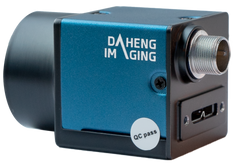
USB3-Camera

GIGE-Camera

5GigE/10GigE-Camera

BOARDLEVEL-CAMERA
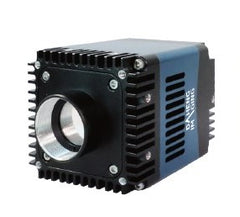
SWIR Cameras

RIGHT-ANGLED-CAMERA
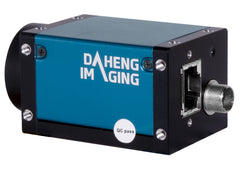
UV Camera
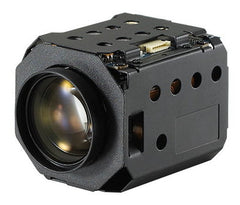
SPECIALS
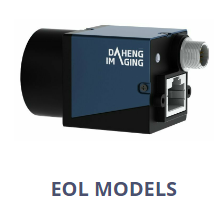
EOL Models
Do you need Support with Selecting an Industrial Imaging Camera?
Our industrial imaging cameras are available with USB2, USB3 and GigE interfaces. The cameras are equipped with the latest image sensors from Sony, Aptina, OnSemi and other well-known industrial image sensor manufacturers.
In our article "How to select an Industrial camera interface" we discuss the industrial imaging camera interfaces, the pro and cons. Below you can find a summary of the article. If you need further support with selecting a industrial imaging camera, please contact us.
Top 5 Machine Vision Camera Interfaces
There are many industrial machine vision camera interfaces available. The following table shows a summary of all interfaces and we will discuss the 5 industrial imaging camera interfaces that we offer further.
| USB3 | FireWire | GiGE | CameraLink | Coaxpress | 5GigE | 10GigE | |
| Supported by GeTCameras | Yes | No | Yes | No | No | Yes | Yes |
| Bandwidth MB/s |
400 | 80 | 100 |
Base: 250 Medium: 500 Full: 750 |
1 lane: 750 2 lanes: 1500 3 lanes: 2250 4 lanes: 3000 |
500 | 1000 |
| Cable length | 4.6m | 10m | 100m | 7m | 100m | 100m | 100m |
| Power + data | Yes | Yes | Only if POE | PoCL | Yes | Only if POE | Only if POE |
|
Frame-grabber mandatory |
No | Yes | No | Yes | Yes | Yes | Yes |
| Cable Costs | Low | Medium | Low | High | Low | Medium | High |
| Camera Costs | Low | Medium | Low | High | High | Medium | Medium |
| CPU Usage | Low | Low | Medium | Low | Low | Medium | Medium |
| Customer acceptence | Good | Fair | Good | Declining | Growing | Growing | Growing |
| Multiple Cameras | Excellent | Excellent | Good | Fair | Excellent | Excellent | Excellent |
USB3 Vision Industrial Imaging Camera
The USB3.0 Vision industrial camera interface is the fastest interface with the highest bandwidth we support, and it uses the least amount of computer processor power out of the 3. Therefore, it is ideal for high resolution and high-speed imaging. The cable length on the other hand, is limited to 4.6 meters. More information about the USB3 Vision industrial camera protocol is available in our blog.
GigE Vision Industrial Imaging Camera
The GigE Vision industrial camera interface is often used in machine vision applications, which require longer cable lengths (>5m). Bandwidth is average (between USB2.0 and USB3.0). This makes it ideal for most machine vision applications. Both 20MP sensors with low framerates as low-resolution cameras with high framerates are available with GigE.
5GigE Vision Industrial Imaging Camera
The 5GigE Vision industrial Camera interface is a new interface that that requries a 5GigE or 10GigE networkcard to operate at full speed. It is using the same cable infrastructure as GigE, This interface is very interesting for industrial camera applications where long cable lengths and high frame rates with high resolutions are required.
10GigE Vision Industrial Imaging Camera
10GigE Vision Industrial cameras require a 10GigE infrastructure. It has the highest bandwidth. However the interface is also relative expensive. For most of the industrial camera applications, GigE, 5GigE and USB3 will deliver sufficient bandwidth.
Differences between industrial imaging cameras and machine vision cameras
Industrial imaging cameras and machine vision cameras are terms that are both being used for industrial cameras. Both types of cameras are used in industrial settings for various applications. Where industrial imaging cameras mostly refer to a broad category of cameras for industrial applications, machine vision cameras are mostly referred to as cameras designed for machine vision applications. When referring to industrial imaging cameras, it could also include other types of cameras such as infrared or high-speed cameras. Both of these types of cameras are also available in our machine vision camera portfolio. Check our SWIR camera page for Short Wave Infrared cameras or our USB3 camera page for high speed cameras. In conclusion, both the terms machine vision cameras and industrial imaging cameras could be used when looking for a camera for applications such as automation, quality control, inspection and measurement.
Industrial Imaging Camera Technology
Industrial cameras, as explained also known as industrial imaging cameras or machine vision cameras are designed for industrial and medical applications. The main differences between an industrial imaging camera and a security or consumer camera are:
- An industrial imaging camera gives out the RAW information, without image compression.
- Very low latency between image capture and image received by the PC
- Option to exactly trigger the moment that the image should be captured with industrial imaging cameras
- Longevity, industrial imaging cameras have a minimum life time cycle of 5-7 years (as most of the time even longer), while security and consumer cameras have a life time cycle of 1-2 years
- Image-sensor-sensitivity, industrial imaging cameras have larger and therefore more light sensitive sensors. As a result the images are better during low light conditions or short exposure times
- With a industrial industrial imaging camera you have access to more features, for example LUT tables, region-of-interest, triggering, pixel-binning etc.
- These are the mean reasons to select an industrial imaging camera instead of a security camera.
Machine vision Applications
In almost every market machine vision cameras are used. Some examples are:
- Pharmaceutical; inspecting products with a machine vision camera, including capsules, injections, bubble caps, labels of the package and more.
- Traffic and transportation; industrial cameras for inspection of railways, Automatic Number Plate Reading (ANPR), Speed control, inspection of roads, 360 degree imaging (street view),
- 3D scanners; industrial cameras are integrated inside to generate a 3D point cloud. It is used to determine the height of an object, distance of an object or checking for defects (missing parts) on a product. It can also be used for making 3D models or even scanning complete persons to integrate them digitally into movies and games
- Industrial; machine vision inspection of glass bottles, carpet, industrial printing machines, etc.
- Logistics; barcode reading, DMC reading, check size of package with a machine vision camera
- Automations; Robots, palletizers, optical guidance systems, quality inspections, position recognition etc.
- Medical; Devices that include industrial imaging camera technology like Endoscopes, Ophthalmology, overview camera during MRI scans, robot surgery, digital microscopes etc.
- Research, Laboratory; Industrial imaging cameras on existing microscopes, digital microscopes etc.
- Sports; tracking movement of sportsmen, animals (horses), objects (golf simulator) and more by using industrial imaging cameras
OVERVIEW MACHINE VISION CAMERA PRODUCTS
A complete overview of all our machine vision cameras, lenses and lighting can be find on our computer vision product page.
Sunday,Monday,Tuesday,Wednesday,Thursday,Friday,Saturday
January,February,March,April,May,June,July,August,September,October,November,December
Not enough items available. Only [max] left.
Add to WishlistBrowse WishlistRemove Wishlist

